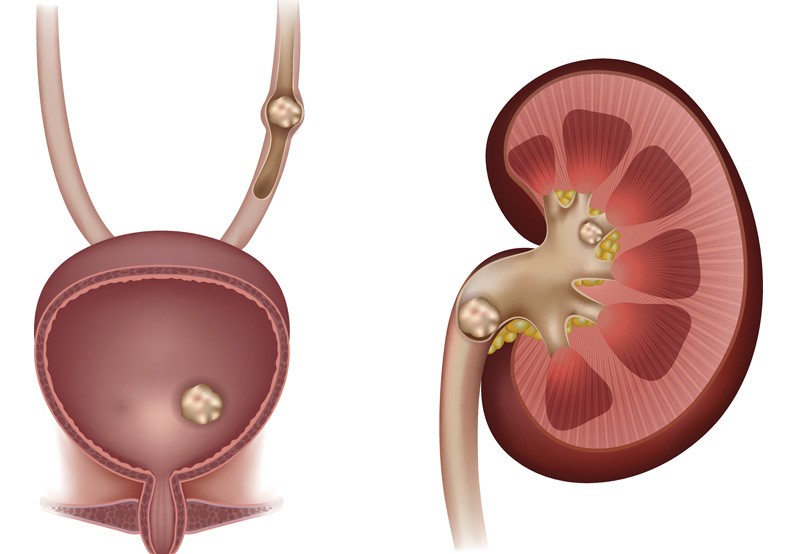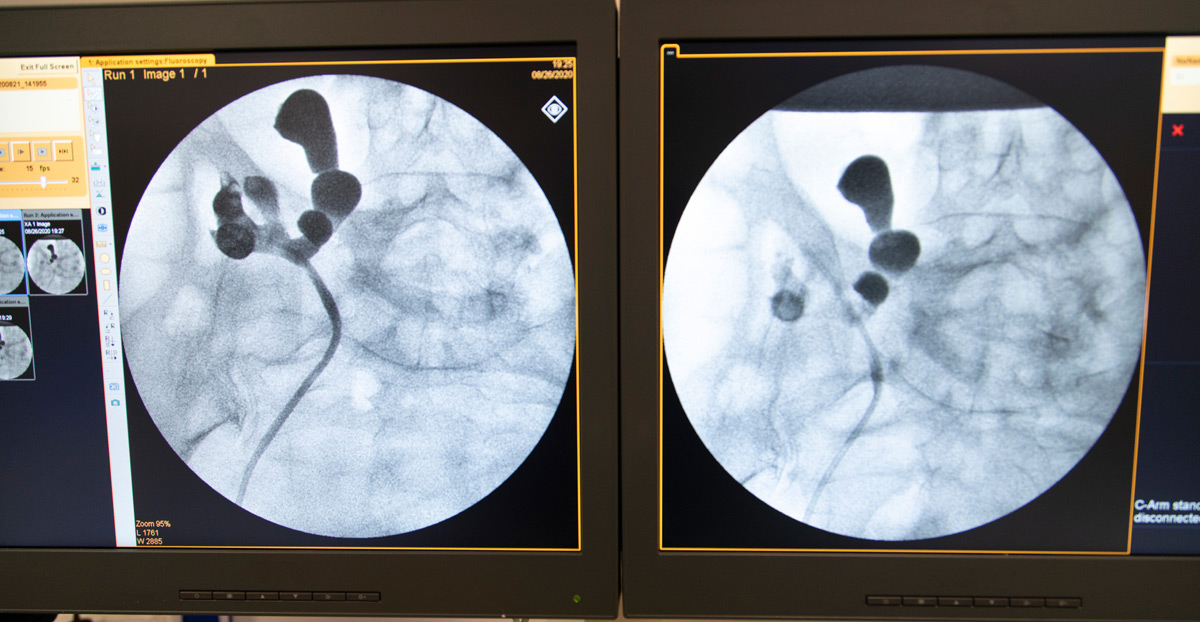

Miniaturized Percutaneous Nephrolithotomy (PCNL), or mini-perc, is a minimally invasive procedure done to remove large kidney stones. Unlike standard percutaneous nephrolithotomy, miniaturized PCNL is done using smaller instruments, helping reduce the risk of bleeding and prevent the risk of kidney damage without reducing the effectiveness of the procedure. The surgeon makes a very small incision during a mini-perc to facilitate a quick recovery process.
Our team of medical professionals uses the latest in laser technology to ensure the best possible results. The Thulium laser allows us to perform more efficient lithotripsy, turning even the largest and hardest of stones into fine dust. The use of Thulium laser technology in the mini-perc has revolutionized the effectiveness of treatment for large kidney stones.
The Benefits Of A Mini-Perc
Patients with large or complex stones may be effectively treated in a minimally invasive manner. The mini-perc may often be performed on an outpatient basis or require only one night hospital stay for observation. Most patients are able to return to work soon after the procedure and resume daily activities.

How To Prepare For The Procedure
For six hours prior to treatment, patients should avoid eating or drinking. However, they may take small sips of water with regular medication. Blood thinning agents should be paused seven to 10 days prior to the mini-perc.
To ensure patients don’t have any bacteria in their urine, patients will need to submit a urine sample for testing before treatment may begin. A kidney function study, full blood count, and a clotting profile may also be necessary to give the surgeon more detailed information about the patient’s condition.
What To Expect During The Procedure
For the duration of the procedure (which may take two to three hours), the patient will be under general anesthesia.
Using x-ray imaging or ultrasound, the surgeon will guide the insertion of the hollow tube into the kidney. The tube will provide access to the kidney drainage system, allowing the surgeon to insert laser fibers, telescopes, and stone grasping devices. Once the stones have been removed, the surgeon may place a ureteral stent, which is a hollow plastic tube, within the body to support internal drainage. The temporary stent will allow urine to drain freely from the kidney to the bladder. The stent is typically removed on an outpatient basis one week after surgery.
The Recovery Process
After surgery, the patient will undergo additional medical imaging to ensure the kidney stone has been completely removed. Some patients may be discharged the same day as surgery, while others may need to stay overnight for observation to ensure full recovery.
Patients may have blood-stained urine for up to one week after the procedure. This is normal, as long as the blood doesn’t get heavier. Patients should avoid engaging in strenuous activity and take oral antibiotics for five days after surgery to prevent infection.
